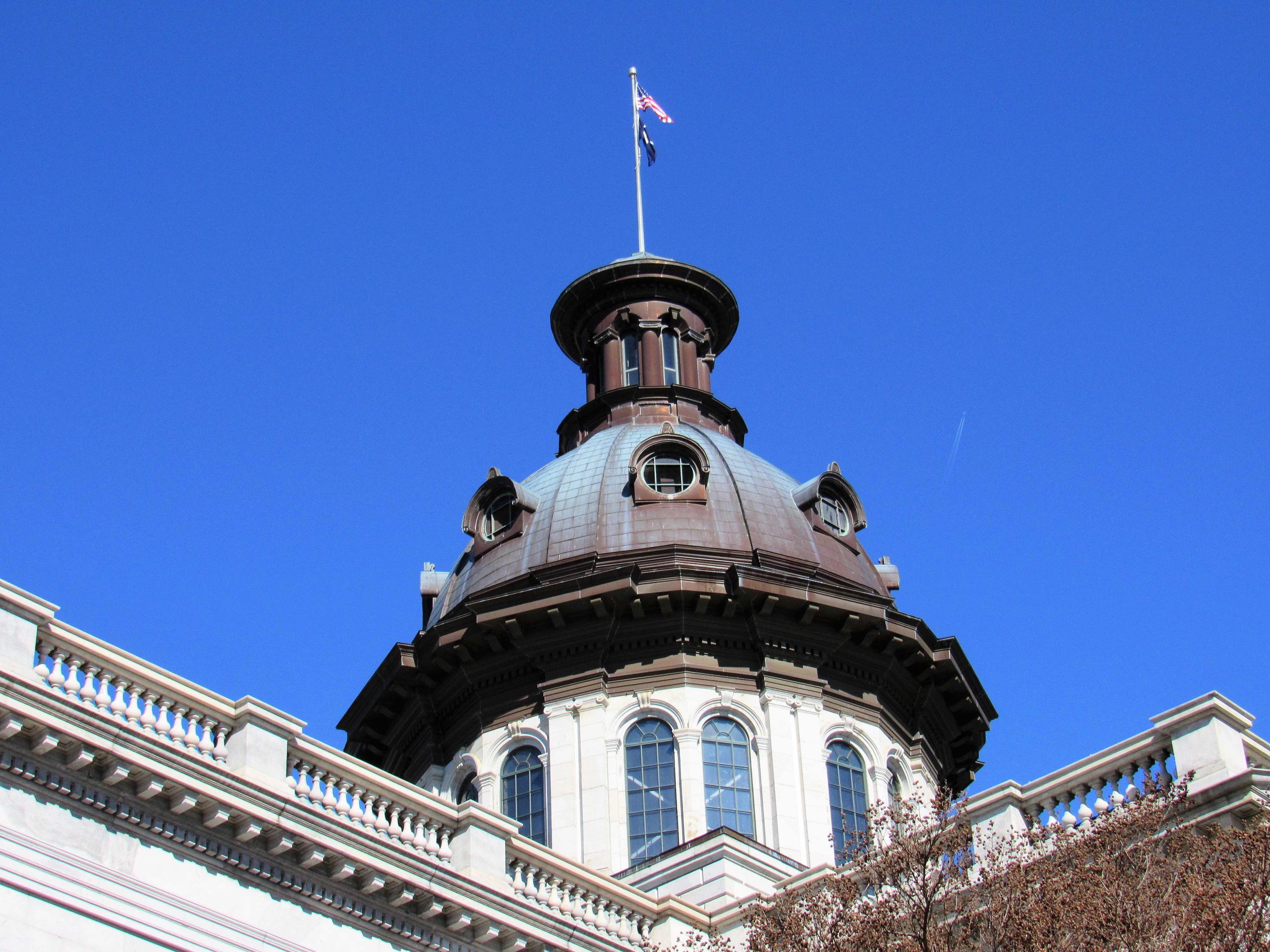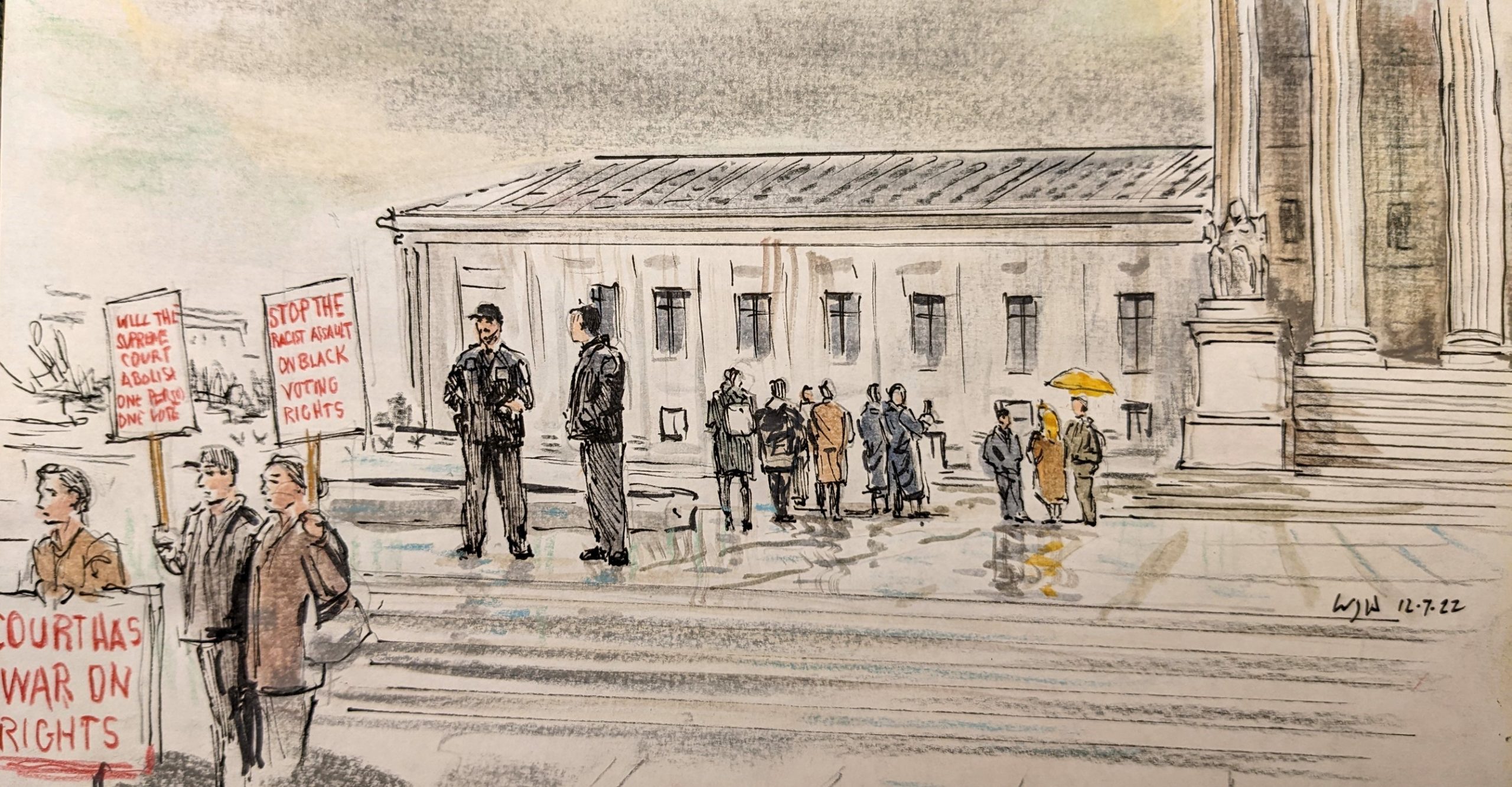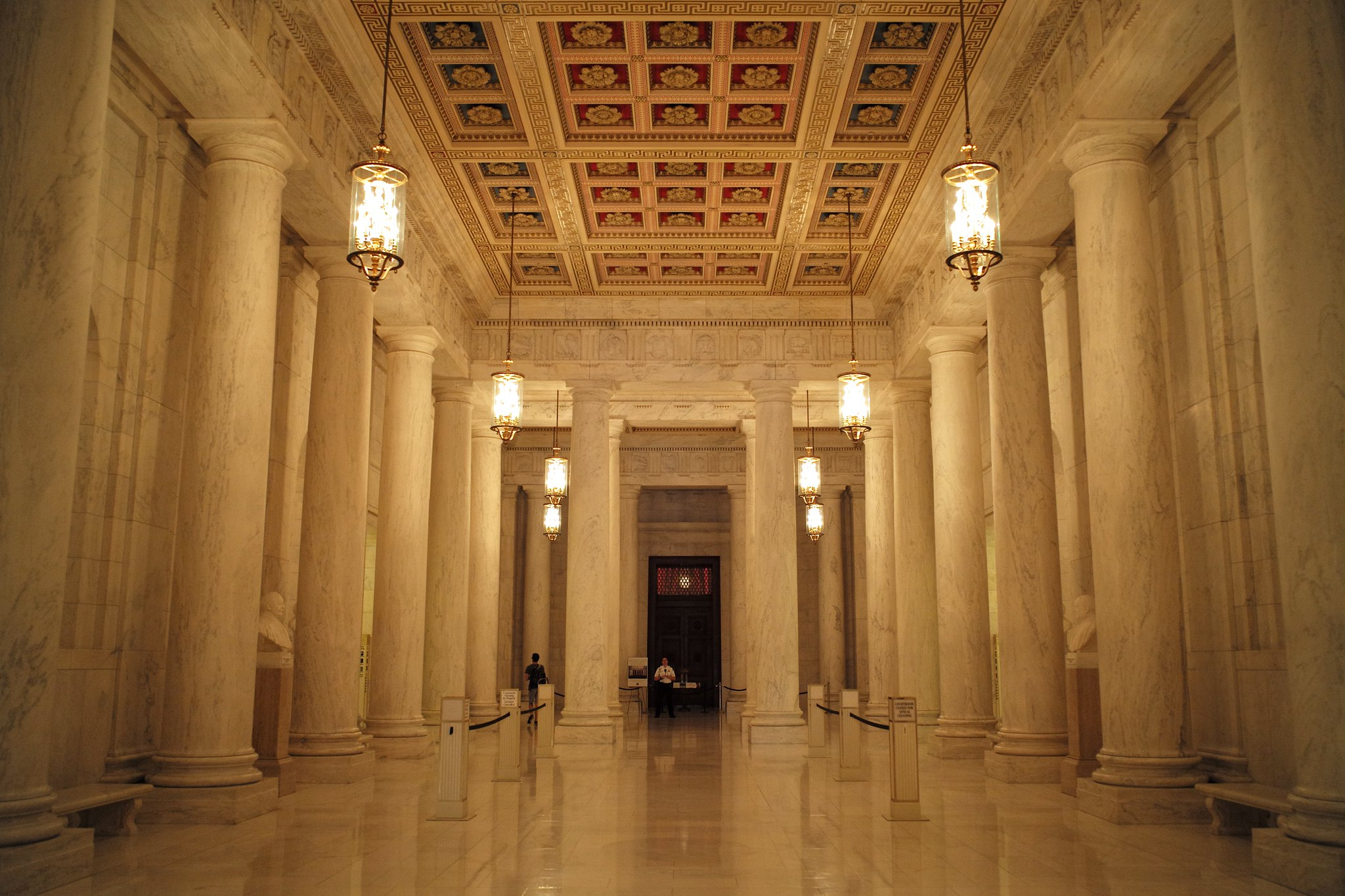Court to hear argument in racial gerrymandering challenge to S.C. district
CASE PREVIEW
on Oct 10, 2023
at 5:09 pm
The South Carolina State House building in Columbia. In Alexander v. South Carolina Conference of the NAACP, Republican legislators argue that they had focused on politics, not race, when drawing new district lines. (Farragutful via Wikimedia)
The Supreme Court will hear oral argument on Wednesday in a dispute over the congressional map that South Carolina’s Republican-controlled legislature enacted in the wake of the 2020 census. A federal court threw out the map earlier this year, holding that one district on the South Carolina coast was an unconstitutional racial gerrymander – that is, it sorted voters based primarily on their race. But the Republican lawmakers who adopted the map maintain that when they moved tens of thousands of Black voters out of the district, they were simply trying to make the district a safe one for Republicans.
The Republican lawmakers urge the justices to overturn the lower court’s ruling and let them reinstate the old map. They emphasize that courts must “disentangle race from politics.” Otherwise, they say, because race and party affiliation are often closely related, courts can “insert themselves into political disputes under the guise of enforcing the Constitution’s prohibition on racial gerrymandering.”
The challengers counter that the lower court simply applied the Supreme Court’s cases holding that it is unconstitutional to use race as the primary factor to sort voters, even for partisan purposes. And because the Supreme Court ruled five years ago that federal courts cannot review partisan gerrymandering claims, their supporters add, a ruling for the lawmakers would allow state legislatures to shield their maps from challenges by claiming they relied on party, rather than race, to draw the maps.
Background
In 2021, the South Carolina legislature adopted a new map for the state’s seven seats in the U.S. House of Representatives. Among other things, the new map moved nearly two-thirds of the Black voters in Charleston County out of District 1, which is currently represented by Republican Nancy Mace, into District 6, represented by Democrat Jim Clyburn. At the same time, the map moved Republican areas in nearby Beaufort, Berkeley, and Dorchester Counties from District 6 into District 1.
In Oct. 2021, Taiwan Scott, a Black voter who lives in Congressional District 1, and the South Carolina State Conference of the NAACP went to court to challenge three of the new districts. They argued that the new districts violated the Constitution because they were the product of racial gerrymandering. The districts were also unconstitutional, the challengers added, because they were drawn with an intent to discriminate based on race.
Defending the plan, Republican lawmakers and state election officials contended that the changes to District 1 were based on partisanship, rather than race. In fact, they maintained, mapmakers relied on election data to draw the maps, without looking at the racial breakdown of residents.
As a challenge to the constitutionality of a congressional map, the case went to a three-judge district court, which held an eight-day trial in the fall of 2022. In January of this year, the lower court held that part of District 1 is a racial gerrymander and blocked the state from using the map for District 1.
The court ruled that race was the overriding factor in the design of District 1. It rejected the mapmaker’s claim that he had not considered race at all when he drew District 1. The court observed that Republicans had believed that they needed to keep the Black voting-age population in the district at 17% to guarantee a Republican victory. It cannot be a coincidence, the court stressed, that despite the large number of people who were moved into and out of District 1, the district maintained a Black voting-age population of 17%.
“State legislators,” the court explained, “are free to consider a broad array of factors in the design of a legislative district, including partisanship, but they may not use race as a predominant factor and may not use partisanship as a proxy for race.” Because the state had not shown that it had a compelling reason to use race in drawing District 1, the court concluded, the map cannot stand.
The three-judge district court initially ordered the state to draw a new map by the end of March 2023. But after the state appealed to the Supreme Court, the lower court put that order on hold until after the Supreme Court acts.
Arguments in the Supreme Court
In their brief in the Supreme Court, the lawmakers tell the justices that although there can be a close correlation between race and party affiliation, the challengers could only prevail if they could show that race was the legislature’s primary consideration, and that the legislature elevated race above traditional redistricting principles. But the challengers did not have any direct evidence that the plan was motivated by race, the lawmakers say. Instead, they write, the only direct evidence showed that the legislature used election data and traditional redistricting principles, rather than race, to draw District 1 – moving Republicans into the district and Democrats out of it, resulting in a net increase in the Republican share of the vote of 1.36%.
Without any direct evidence that the plan was motivated by race, the lawmakers continue, the lower court should have required the challengers to provide an alternative map demonstrating that the legislature could have accomplished its goal of ensuring a safer Republican seat while still adhering to traditional redistricting principles. But the lower court failed to do so, the lawmakers note, and in fact the challengers’ alternative maps would have created a majority-Democratic district.
The lawmakers warn the court that because of the correlation between race and party affiliation, allowing the lower court’s decision to stand would place South Carolina and other states “in an impossible bind” because they could face liability for racial gerrymandering whenever, as in this case, they take action to make majority-white competitive districts safer for Republicans. “And it would invite federal courts to micromanage political disputes in countless such districts across the country under the guise of superintending the fine-tuning of their racial composition,” they conclude.
The challengers point to the eight-day trial, with 42 witnesses and 652 exhibits, held in the lower court. The Supreme Court can only overturn the lower court’s conclusion that District 1 is the product of racial gerrymandering, they stress, if it believes that the lower court was clearly wrong after assessing all of that evidence. But the lower court’s decision, they say, it is “far more than plausible.” The lawmakers, the challengers assert, could have fixed the discrepancy in population between Districts 1 and 6 by moving 85,000 people from District 1 to District 6. Instead, they say, the lawmakers opted to move 53,000 people into District 1 and then move 140,000 different people out. In doing so, they contend, the lawmakers “bleached” Charleston County, taking away 62% of its Black residents and all but one of the precincts in the county with more than a thousand Black voters.
The lawmakers also did not rely on traditional redistricting principles to redraw District 1, the challengers tell the justices. Putting Charleston County’s Black residents in District 6, which is centered on the state capital of Columbia approximately 100 miles away, did not unite local communities, they suggest. “The only ‘shared interests’ other than race” that the lawmakers could identify between residents of Charleston and Columbia was their proximity to the interstate highway connecting the two. As drawn in the 2021 map, they add, District 1 is also not contiguous – that is, you can’t get from one end of the district to the other without going through a different district.
In any event, the challengers insist, the lawmakers are wrong when they say that the challengers lack direct evidence that the lawmakers considered race in drawing District 1. The evidence that the 2021 map was motivated by race was “overwhelming,” the challengers maintain, including an acknowledgement by Will Roberts, the mapmaker, that he was aware of data regarding black voting-age populations as he worked.
The challengers push back against the lawmakers’ contention that they should have offered an alternative map, saying that they were not required to do so. Instead, they emphasize, plaintiffs in a case like this simply must show that race was the overriding consideration in placing voters. The Supreme Court has said that maps can be useful when the plaintiffs don’t have a lot of direct evidence that the mapmakers gave too much weight to race, the challengers acknowledge, to demonstrate that the mapmakers passed up other options that would achieve their goals without relying too heavily on race. But here, the challengers say, they have plenty of evidence.
Looking ahead
Both sides have asked the court to issue a decision by Jan. 1, 2024, to give the state enough time to have a map ready for the 2024 election cycle. This means we could know by the end of the year not only how the court will rule, but whether it will provide more guidance on how courts, legislatures, and litigants can distinguish between racial motivations and party politics.





